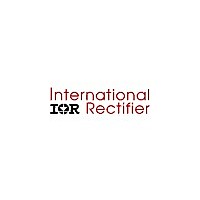IRISMPS3 International Rectifier, IRISMPS3 Datasheet

IRISMPS3
Related parts for IRISMPS3
IRISMPS3 Summary of contents
Page 1
... AN1024a - Flyback transformer design for the IR40xx series AN1025a - Designing a Power Supply Using The IRIS40xx Series DT01 Standby Circuit For the IRIS40xx Integrated Switchers IRIStran.xls - IRIS Series Flyback Transformer Design Spreadsheet IRIS4013(K) - Datasheet www.irf.com D ESIGN 233 Kansas Street El Segundo CA 90245 USA Load Range Min Max 0A 4A IRISMPS3 Regulation (V) 14.4V ~ 15.6V 1 ...
Page 2
... Circuit Description The IRISMPS3 reference design is a complete tested power supply circuit designed for a universal AC line input and will provide a 15V, 4A full load DC output. The design uses a flyback converter topology, with an IRIS4013K as the main switch and control device. The initial start-up current for the IRIS4013K is provided by a dropper resistor from the DC bus. Once the circuit is started the Vcc power for the IRIS4013K comes from the bias winding of the main transformer ...
Page 3
... At full load the bias winding voltage is higher than the switching threshold of the mode switching circuit which is set at about 13V in this circuit, this results in a current through D4/R8/R12/D7 which causes enough voltage across the base emitter junction forward bias it, which in turn allows the quasi-resonant signal to pass www.irf.com IRISMPS3 ) , the IRIS4013K starts to operate and CCUV+ 3 ...
Page 4
... Note that at the start of the ON time for the FET the FB pin signal has a higher dv/dt rise. This is due to the feedback signal from the output creating the offset voltage to keep the output power constant. Also note that the on-time is shorter and hence the operating frequency is higher. 4 IRISMPS3 www.irf.com ...
Page 5
... Fig 4) Drain (D) voltage of IRIS4013K (CH1) and the Source pin voltage (CH3) at 230VAC in/Full load Fig 4) shows the Drain voltage and the source pin voltage at 230VAC input and full load output current. The Source pin voltage is effectively a measure of the primary current, as this is the voltage across the current www.irf.com output IRISMPS3 5 ...
Page 6
... The source pin voltage ramps to a higher level in order to get the correct amount of energy into the transformer. Remember that the energy stored is 1/2LI transformer the rate of change of current is lower will take longer to reach the same primary current level. 6 output 2 and V=LdI/dt so with a lower voltage across the IRISMPS3 www.irf.com ...
Page 7
... The on time is very short as the only energy required is the energy needed to keep the circuit operating and hold the output at 15V. Under these conditions the input power consumed is 488mW, which meets the Energystar and Blue Angel Requirements. Fig 7)Drain (D) voltage of IRIS4013K (CH1) and the FB pin voltage (CH3) at 230VAC in/no load output www.irf.com IRISMPS3 7 ...
Page 8
... In this section we will show the efficiency of the circuit under various conditions. Fig 9) shows a graph of the efficiency vs AC input voltage for a full load output. This shows the efficiency well above the 85% level for most of the input range. Fig 10) shows the efficiency vs load current for various input voltages 120VAC in/no load output IRISMPS3 www.irf.com ...
Page 9
... Full Load Efficiency vs Input Voltage 120 170 AC Input Voltage Fig.9) Efficiency vs Load Current 0 Load Current (A) Fig.10) IRISMPS3 220 265 90V 120V 170V 220V 265V 4 9 ...
Page 10
... Energystar/Blue Angel requirements. 1 0.8 0.6 0.4 0 Component Temp vs. AC Input Voltage (Ta=25° Load Power vs Input Voltage 120 170 AC Input Voltage Fig 11) 170 264 AC Input Voltage IRISMPS3 220 265 D1 U1 T2- CORE T2- WIND www.irf.com ...
Page 11
... Output Ripple Fig 12) shows the output ripple of the power supply with a 90VAC input and full load 4A output. Peak to peak ripple is 100mV. the waveform is shown Bandwidth limited to remove HF noise from the measurement. Fig 12) Output Ripple Voltage at 90VAC input / Full Load output www.irf.com IRISMPS3 11 ...
Page 12
... Transient Response Fig 13) shows the transient response of the power supply with a 90VAC input. The load change is set to change from 2.5A to 1.5A which is a 50% load typical setting +25%. 12 Fig 13) Transient Response at 90VAC in IRISMPS3 www.irf.com ...
Page 13
... Top Board Layout www.irf.com IRISMPS3 13 ...
Page 14
... Bottom Board Layout 14 IRISMPS3 www.irf.com ...
Page 15
... WORLD HEADQUARTERS: 233 Kansas St., El Segundo, California 90245 Tel: (310) 252-7105 http://www.irf.com/ Data and specifications subject to change without notice. www.irf.com IRISMPS3 2/13/2001 15 ...











